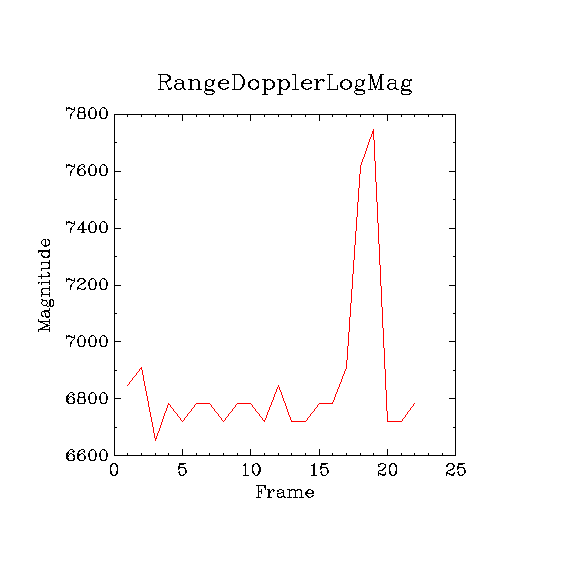Other Parts Discussed in Thread: MMWAVE-SDK,
Hi,
I have compared the data in rangeDopplerLogMagMatrix which is sent to the visualizer gui to the data in fftOut1D. The comparison is done after clutter removal and the code used for the comparison is similar to
MmwDemo_process2D(dataPathObj);
for (rngIdx = 0; rngIdx < dataPathObj->numRangeBins; rngIdx++)
{
a1 = fftOut1D[rngIdx*(dataPathObj->numDopplerBins)].real;
a2 = fftOut1D[rngIdx*(dataPathObj->numDopplerBins)].imag;
mag_sq = a1*a1 + a2*a2;
System_printf("mag_sq, zero doppler %d %d\n",mag_sq, dataPathObj->>rangeDopplerLogMagMatrix[rngIdx*dataPathObj->numDopplerBins]);
}
I obtain believable results from the fftOut1D data but not from the rangeDopplerLogMagMatrix data. The rangeDopplerLogMagMatrix data does not indicate the location of the expected scattering centers as does the fftOut1D data does. Naturally, the gui graphical out produces the correct results. I'm I missing some processing steps?
Thanks for the help.
Al



